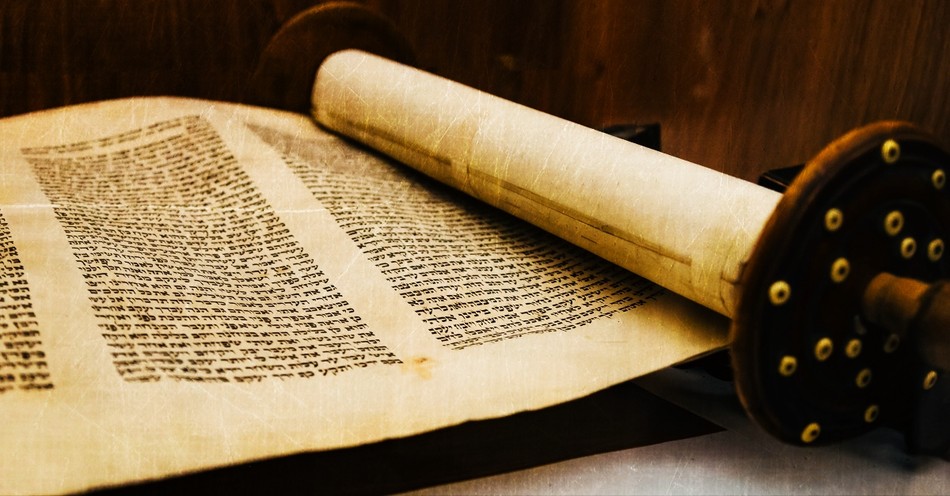You may have heard the term Pentateuch in reference to the first five books of the Old Testament: Genesis, Exodus, Leviticus, Numbers, and Deuteronomy. But another term also applies to the first five books of the Bible: the Torah. These five books, written by Moses, encompass the Creation account (Genesis 1), the fall of man (Genesis 3), the Patriarchs, the exodus from Egypt, and the laws which governed the Israelites as they headed toward the Promised Land.
The Torah breaks down in the following books:
Genesis— Creation of the world, the Fall of man into sin, the Flood that covered the earth, and the Patriarchs Abraham, Isaac, and Jacob. Within these first 50 chapters of the Bible, we get to explore the origins of the world. We see God pouring his heart into the creation of the world, only for the world to turn on its heels in Genesis 3 and plunge into sin. We meet the patriarchs of Israel (the Founding Fathers) and get to learn about their lives and stories. We end with the son of the patriarch Jacob, named Joseph, who takes up the narrative from Genesi 37-50.
Exodus— The escape of the Israelites from their slavery in Egypt, and Moses receiving the Ten Commandments. After Joseph has his family settle in Egypt, the Israelites numbers grow. The Egyptians, fearful of other enemies as well as the Israelites, force the Israelites into 400 years of brutal slavery. God eventually sends Moses to free the people of Israel. They escape Egypt, and God gives Moses a list of commandments by which the Israelites must follow.
Leviticus— Laws, festivals, and observances of the Jewish people. Piggybacking off of Exodus, while the Israelites wander the desert, they begin to recover as a nation. God lays down laws and statutes they must observe for rightful living with one another. He also institutes many holidays and observances, still practiced to this day. We learn about each of these holidays in this book.
Numbers— The years the Israelites spent wandering in the desert. Don't let the average Joe fool you, this isn't a boring book. It's full of war stories, spies, and talking donkeys. While the Israelites were heading into a land of their own, after their slavery in Egypt, they spent several decades wandering the desert, partially because of their stubbornness and disobedience to God. In Numbers, we receive the desert narratives. We see God providing for them in the wilderness.
Deuteronomy— More laws for the Jewish people. Piggybacking off of Leviticus, we see more laws for the Jewish people. These show us how far each human has fallen from grace and how much we need Jesus to come to our rescue. The narrative concludes with Moses' passing and Joshua taking the reins and leading the Israelites into the land they were promised.
When was the Torah written, what does the name mean, and why does this matter for Christians today? We’ll dive into all of these questions in this article.
When Was the Torah Written?
Since most scholars attribute the authorship of the Torah to Moses, we can assume he wrote the five books during his lifetime. Moses lived approximately between 1525-1406 BC.
Did other authors also contribute to the Torah? A theory known as the Documentary Hypothesis, or the JEDP theory, attributed four different writers, or four groups of writers, who penned the Old Testament as late as the Babylonian exile (586 B.C., about 1000 years after the life of Moses).
However, the JEDP theory exists mostly on speculation and is contrary to what Scripture states, attributing the authorship to Moses. We know that even Jesus in the New Testament asserts the authority by which the Torah has been written. And since Jesus is God, we can assume that God tells no lies. The Documentary Hypothesis falls apart. We can know that the Pentateuch was most likely written in the 1500s or 1400s BC.
Even in an extrabiblical sense, the historian Josephus seems to assert that the author of the Torah was Moses. Part of how historians judge the accuracy and authorship of a document is by looking at what other verified documents say about it. This is why the Gnostic Gospels never really gained momentum because they didn't have eyewitness confirmation, didn't have other verified texts to assert their authority, etc.
What Does the Name Torah Mean?
The Old Testament, or the Hebrew Bible, is known as the “Tanakh,” often divides the work into three main sections: the Torah, the Ketuvim, and the Nevi’im. We’ll discuss the definitions of all three of these.
- Torah— Teachings, or “Law” especially ascribed to the laws that make up a good portion of the first five books of the Bible. We know these as the ones mentioned above: Genesis, Exodus, Leviticus, Number, and Deuteronomy.
- Ketuvim— “Writings,” this section comprises of the wisdom literature (Psalms, Proverbs, etc.) and the historical narratives of Israel (Joshua, Judges, etc.). If it's poetry or if it tells about the history of the Israelites people, you've likely found a Ketuvim book.
- Nevi’im— “Prophets,” both the major and minor prophets envelop this section of the Tanakh. These, in the Christian Old Testament, would be found at the end of the Old Testament, concluding with the Book of Malachi.
Jesus refers to these three sections of the Old Testament in Luke 24:44.
We do have to keep in mind that the ordering of the Jewish Bible will look a little different than the Christian Old Testament. The former often combines books such as the Samuels and Kings. Some books operate under other names. But the vast majority of the content is still the same.
Why Does This Matter for Christians?
First, Christians recognize the inerrancy of Scripture, including the Torah. We should understand the words of the Torah have just as much authority as any book found in the New Testament (2 Timothy 3:16-17).
Second, we need to understand that people who practice Judaism also read the Torah. We have a foundation in which we can create a dialogue about the good news of Christ, as we recognize the Torah as canon. We can show how God has moved through the Torah to bring salvation to his people (i.e. through Moses, etc.), and how that narrative continues into the New Testament.
Third, we can see God working behind the scenes from the very beginning. We can often get tempted to skip over sections of the Bible like Leviticus and Numbers to simply “get to the good stuff,” but God has his fingerprints on every part of Scripture. We simply can’t ignore certain sections simply because they don’t entertain us as much as others.
The Torah is something that each Christian should invest time in. In Jesus' day, every Israelite male would've memorized the first five books of the Old Testament. It contained the history of the Israelite people, the law, and showed them how time and time again God came to their rescue. We can also look at the Old Testament through a New Testament lens. We know that although the world falls apart in Genesis 3, that that isn't the end of the story. God comes to our rescue 39 books later.
©iStock/Getty Images Plus/Vladimir Zapletin
This article is part of our Bible resource for understanding the significance and meaning of biblical phrases and ideas. Here are our most popular Bible articles to grow in your knowledge of God's Word:
Promises of God in the Bible
Is "This Too Shall Pass" in the Bible?
What Was the Ark of the Covenant?
Top 10 Bible Stories for Kids
“Iron Sharpens Iron” in Proverbs 27:17
"Fearfully and Wonderfully Made" in Psalm 139
“Be Still and Know That I am God” in Psalm 46:10
"No Weapon Formed Against Me Shall Prosper" - Isaiah 54:17


_639003522088907085.jpg)
